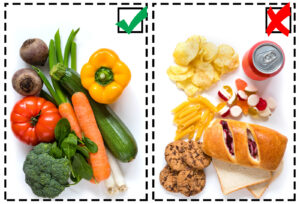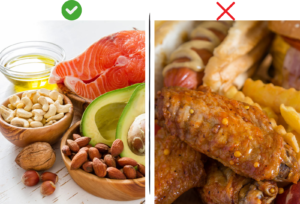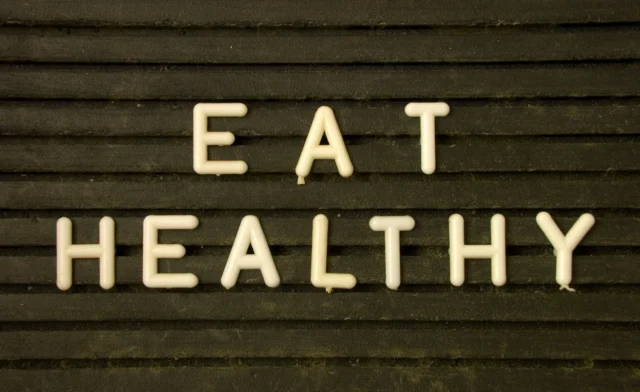Food That’s Healthy for You
Here are a few ways to incorporate “Food That’s Healthy for You” into that title, maintaining a natural flow:
1. What Is Healthy Food, Really?
Expanded View:
Healthy food is not about fad diets or strict rules. It’s about balanced, nutrient-rich options that support your body’s needs, both in the short and long term. It includes:
- Whole foods: Unprocessed or minimally processed ingredients (like fruits, veggies, legumes).
- Functional foods: Foods with specific health benefits (e.g., probiotics in yogurt, antioxidants in berries).
- Sustainable choices: Healthy not only for the body but also for the planet.

Example: A grilled salmon fillet with quinoa and spinach is rich in protein, healthy fats, fiber, and iron supporting heart, brain, and digestive health.
📚 Sources:
- Harvard School of Public Health – Healthy Eating Plate
- World Health Organization – Healthy Diet Facts
2. Top Healthy Foods You Should Eat More Often
Expanded List with Functions:
| Food | Key Nutrients | Health Benefits |
|---|---|---|
| Spinach | Iron, magnesium, folate | Energy, blood health, brain function |
| Salmon | Omega-3, protein, B12 | Brain health, heart health, anti-inflammatory |
| Berries | Vitamin C, antioxidants | Memory, skin health, immune system |
| Greek Yogurt | Protein, probiotics | Digestion, bone strength, gut-brain axis |
| Eggs | Protein, choline, B-vitamins | Mental clarity, eye health, muscle repair |
| Nuts & Seeds | Healthy fats, zinc, selenium | Brain function, hormone balance, satiety |
| Sweet Potatoes | Beta-carotene, fiber | Vision, immune support, gut health |
| Oats | Fiber, complex carbs | Sustained energy, cholesterol control |
| Avocados | Monounsaturated fat, potassium | Heart health, brain lubrication, mood |
| Green Tea | Antioxidants (EGCG), L-theanine | Focus, metabolism, relaxation |
📚 Sources:
3. Why Eating Healthy Matters So Much

Expanded Benefits:
✅ For Your Body:
- Lowers risk of chronic disease (heart, diabetes, high blood pressure)
- Helps maintain a healthy weight
- Improves gut health and digestion
✅ For Your Brain:
- Improves memory, alertness, and mood
- Supports neurotransmitter production (dopamine, serotonin)
- Reduces anxiety and brain fog
✅ For Your Daily Life:
- Enhances productivity and stamina
- Promotes better quality sleep
- Builds long-term emotional resilience
Example: Students who eat balanced meals with protein and fiber perform better on tests than those who skip breakfast or eat sugary cereals.
📚 Sources:
4. How to Build a Healthy Eating Routine

Expanded Tips:
Start Small, Stay Consistent:
- Replace soda with water or herbal tea
- Add 1 veggie to every meal
- Swap white bread for whole grain
Use the 50/25/25 Plate Rule:
- 50% veggies/fruits
- 25% whole grains
- 25% protein (plant or animal-based)
Meal Prep Made Easy:
- Cook large batches on weekends
- Use simple ingredients (5 or fewer)
- Store in portion-controlled containers
Mindful Eating Practices:
- Eat without screens
- Listen to your hunger cues
- Chew slowly and savor each bite
📚 Sources:
5. Common Nutrition Myths (Busted)
Expanded Debunks:
❌ “Carbs are bad”

√ Whole carbs (like oats or lentils) are essential for energy and brain fuel.
❌ “Fat makes you fat”

√ Healthy fats like avocado and olive oil help control weight and inflammation.
❌ “Healthy food is expensive”
√ Buying in bulk, meal prepping, and focusing on whole ingredients can save money.
❌ “Skipping meals helps lose weight”
√ Skipping meals slows your metabolism and leads to overeating later.
📚 Sources:
Create a Personalized Healthy Eating Plan
Optional Tools:
- A 7-day meal planner
- Grocery list template
- Healthy swaps checklist
- Budget-friendly tips




